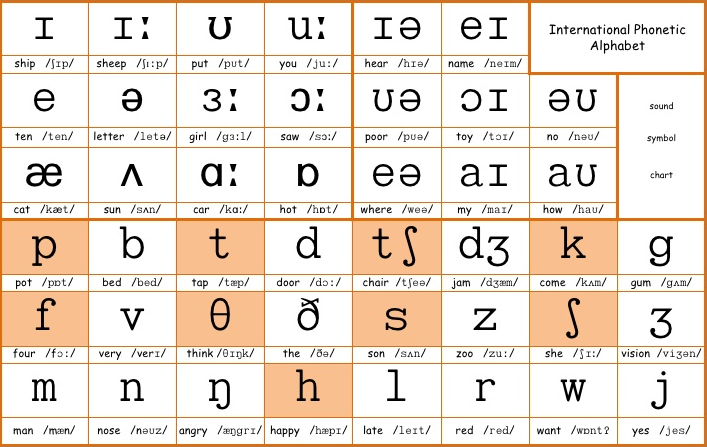- www.accentbase.com
- info@accentbase.com
The International Phonetic Alphabet is a system of phonetic symbols that can be used to represent pronunciations of any word in English. People don’t usually consider the discrepancies between written words and how we pronounce them, but English is rife with them. Consider the following words:
true; you; through; too; two; to
/u:/
In all six words there is exactly the same final vowel sound (presented as /u:/ in the IPA system), but six completely different spelling patterns. This is not anomalous, and once you start thinking about this problem with English you will find that this sort of thing is endemic. Pity the poor student who is faced with the more than 350 spelling rules of English.
The first question most people consider at this point is ‘why?’. The history of English shows that it is a hybrid language. The spelling problem stems from the fact that French was the language of royalty, governance and legislature for almost 400 years following the Norman invasion of 1066. At this point English was forced underground, and various regional spelling patterns emerged. Rather than get bogged down in this extremely complex historical issue, if you are really interested in all of this there is an excellent video on YouTube which provides a potted history, or read or watch Melvyn Bragg’s excellent The Adventure of English which explores it all in much greater detail.
But it’s not the purpose of AccentBase to ponder the discrepancies between spoken English and the written form as this is just a fact of life for anybody using or learning the language. We intend to overcome this problem using videos produced by you, using the IPA as the key.
If you’re interested in how the system will actually work for the user, or just curious to know what those funny characters are next to every word in the dictionary (and on our videos), please read on, it’s actually really simple, and many people enjoy learning it.

The English language in its standard form has 44 distinct sounds. They are presented individually in the chart above. For each sound there is an example word given underneath which uses that sound. As you can see the consonants mostly use the same letters as the regular alphabet to form the phonetic symbol, so they are learned immediately by somebody who is already literate. There are actually only eight of them to learn.
The real difficulty lies in the vowel sounds at the top, and you have to think of how you entered into literacy in order to grasp them; short vowels, long vowels and diphthongs. Let’s start with the long and short vowel sounds. We first learn long vowel sounds when reciting the capital letters of the alphabet:
A /eɪ/ E /ɪː/ I /ɑɪ/ O/əʊ/ U/juː/
say see cry go use
Short vowel sounds are used in teaching basic phonics to young children when we sound out the words, as in c-a-t = cat.
a /æ/ e /e/ i /ɪ/ o/ɒ/ u /ʌ/
cat bed big hot bus
Diphthongs sound complicated but they are just vowel sounds combined with other end sounds like ‘ear’ /ɪə/ and ‘ow’ /ɑʊ/ .
So use the sample words in the chart and in each case see how many other spellings for the vowel sounds you can come up with. You have to say them out loud or in your head to test them. You can check your findings in a good dictionary.
If you’re still having difficulty grasping the whole thing, check out our video here: